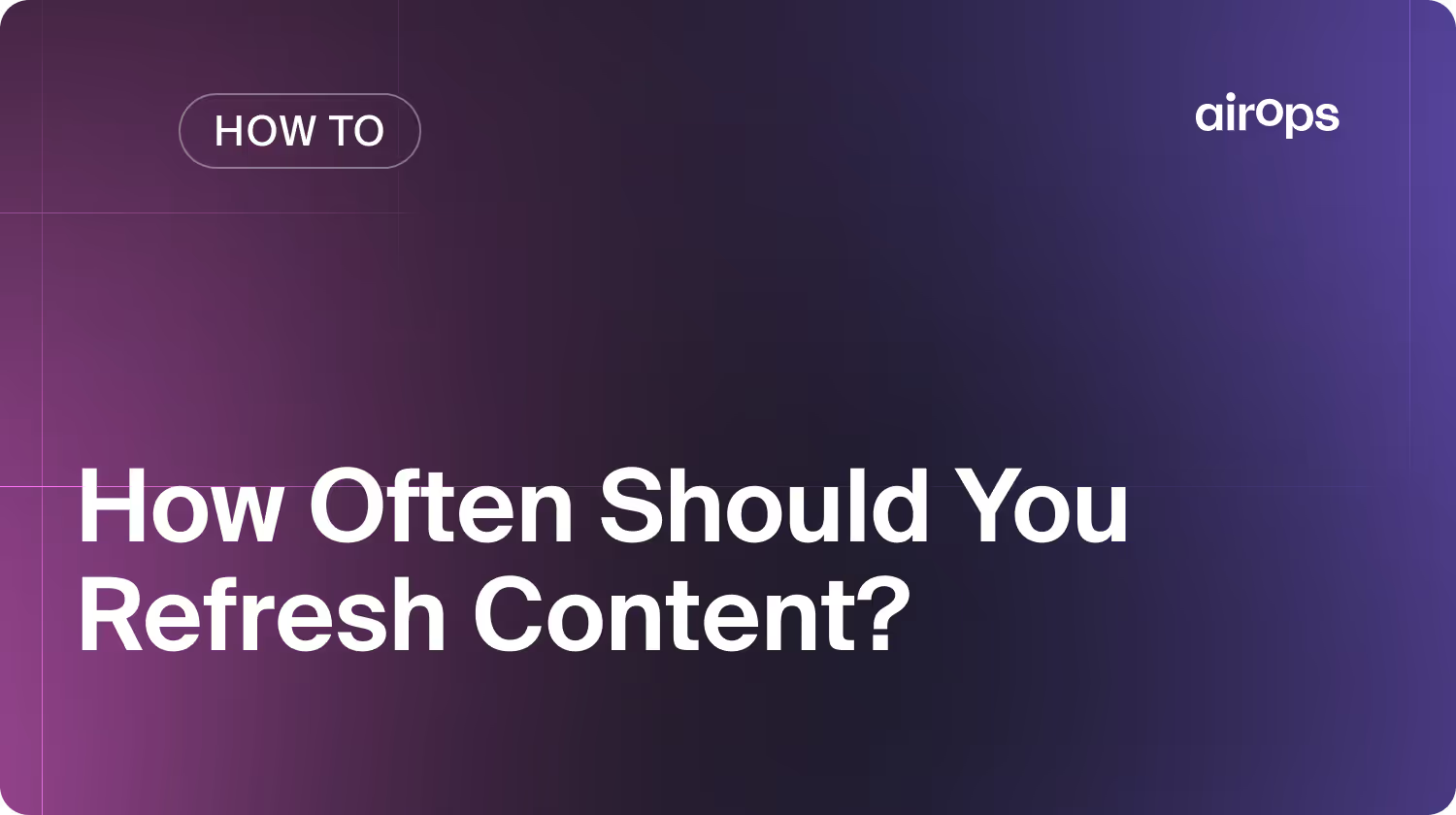Content Ideation: Proven Strategies for Generating Ideas

Finding new content ideas that resonate with your audience is crucial for growth.
Effective ideation blends audience insights, keyword research, and trend analysis to keep your pipeline fresh and aligned with search intent.
This article covers proven strategies—from gap analysis to planning—to fuel your content calendar with high-impact topics.
Generating high-impact content ideas is one of the toughest, and most important challenges for marketers today. Content marketing drives brand growth, with DemandScience reporting that 70% of marketers actively invest in this strategy.
To outperform competitors and meet evolving audience expectations, you need a systematic, data-driven approach to content ideation. Discover what actionable frameworks can help you build a content pipeline that remains relevant, scalable, and fully aligned with your business objectives.
9 Strategies for Generating Content Ideas
1. Understand Your Target Audience
You can generate content ideas by using structured, research-backed techniques. Start by understanding your target audience. Research their interests, pain points, and common questions. Use social media, online forums, and customer feedback to gather insights.
- Social media platforms reveal trending topics and questions.
- Forums like Reddit and Quora highlight recurring challenges and gaps.
- Customer feedback uncovers real-world issues and interests.
Tailor your content ideas to address the needs of your target audience and buyer personas. When you solve real problems, your content earns more engagement and loyalty.
How can I tailor content ideas to different stages of the buyer journey?
To tailor content to each stage of the buyer journey, align specific formats and topics with the audience’s needs at that stage.
- Awareness: Focus on educational content—how-tos, guides, trends, and problem-explainer articles.
- Consideration: Create comparison posts, case studies, expert insights, and solution-focused content.
- Decision: Use product demos, FAQs, testimonials, and implementation guides.
Align each content idea with a clear intent and outcome. Use keyword intent analysis and buyer persona data to refine the angle, format, and CTA.
2. Keyword Research
Keyword research reveals the terms your audience uses to find information. Use tools like Google Keyword Planner or Semrush to identify high-potential keywords. Prioritize keywords that relate to your target audience to help you narrow down topics that have strong audience-user intent alignment.
- Long-tail keywords are more specific and often less competitive.
- They help you target niche topics and attract engaged visitors.
- Use tools like Answer the Public and Ubersuggest to find these opportunities.
Gather keywords that align with your goals and audience needs to help you develop new content ideas.
3. Monitor Industry Trends and News
Tracking trends helps you create timely, relevant content that aligns with your audience’s current interests. Staying updated ensures your content remains fresh, authoritative, and top-of-mind in your niche.
To monitor trends effectively:
- Leverage Google Trends to stay ahead of market shifts.
- Set up Google Alerts for high-priority topics and keywords.
- Subscribe to industry newsletters and trade publications like MarketingProfs, Content Marketing Institute, or TechCrunch.
- Follow thought leaders and competitors on LinkedIn, X (formerly Twitter), and niche communities.
- Use trend analysis tools like Exploding Topics, Glimpse, and BuzzSumo to detect emerging content opportunities.
When responding to trends:
- Add your unique perspective or actionable takeaways to differentiate your content.
- Connect the trend to specific audience pain points or business goals.
- Use a rapid publishing workflow to ensure your content reaches audiences while the topic is still relevant.
Timely content increases visibility in news-related search queries and helps position your brand as a go-to resource.
4. Perform a Content Gap Analysis to Uncover Missed Opportunities
A content gap analysis helps you find topics your competitors cover but you don’t. Use tools like Semrush to audit top-ranking articles and compare them to your own content.
How to perform a content gap analysis:
- List competitor topics and map your coverage against them.
- Identify missing or underdeveloped areas in your content.
- Create new, in-depth pieces to fill these gaps and outperform competitors.
This approach ensures your content stays comprehensive and competitive.
5. Conduct a Full Competitor Analysis
Competitor analysis reveals what works and where you can differentiate—enabling you to create content that fills gaps while outperforming competitors in quality, coverage, and audience alignment.
What to look for during a competitor analysis:
- Analyze competitor blogs, video channels, social posts, and newsletters.
- Look for trends in formats (e.g. how-tos, case studies), CTAs, tone, and content frequency.
- Identify underserved audience segments or content gaps in their coverage that you can own.
- Use insights to shape your own mix of topics, formats, and distribution channels.
Strategic competitor analysis helps you differentiate and outperform—not just match.
How often should I perform a content gap or competitor analysis to keep my strategy current?
Ideally, you should perform a content gap and competitor analysis quarterly to stay aligned with evolving search trends, audience needs, and market shifts. However, if you operate in a fast-moving industry or publish content frequently, consider monthly mini-audits to catch emerging opportunities or gaps early.
6. Analyze Existing Content for Split Intent Opportunities
Auditing your existing content is a powerful way to uncover new content ideas and maximize your site’s visibility.
Many articles unintentionally address multiple search intents—distinct questions or topics that users search for separately. Targeting these split intents with dedicated pages can significantly boost your rankings and relevance.
How to identify split intent opportunities:
- Review both top-performing and underperforming articles in Google Search Console or your analytics platform.
- Use SEO tools such as Ahrefs or Semrush to analyze which queries each URL ranks for.
- Identify pages that rank for multiple, loosely related search intents (for example, “how to write a blog post” versus “blog post outline template”).
To determine if splitting content is the right approach, examine the top-ranking search results for each query. If the leading pages focus on different subtopics, each with its own structure and content type, this signals that search engines and users expect separate, intent-specific pages.
Consider splitting content when:
- A page ranks for three or more distinct queries with different user intents.
- A subtopic could serve as a standalone, high-value resource.
- Multiple themes are combined in a single post without clear internal structure.
Splitting content in these scenarios helps you generate targeted content ideas, improve alignment with user search intent, and increase the likelihood of being cited in AI Overviews and answer engines.
7. Generate Ideas Around Product Launches and Campaigns
Product launches, feature updates, and internal initiatives are powerful sources of content inspiration. These events create natural opportunities to generate content that informs, educates, and excites your audience.
How to turn launches into content ideas:
- Break down new features into how-to guides, FAQs, or comparison articles
- Share behind-the-scenes stories about the development or customer feedback
- Create use case content showing how the update solves specific problems
- Tie the product to seasonal trends or industry shifts to increase relevance
Also, look at how competitors announce or explain their launches—this can spark format and positioning ideas.
8. Repurpose Content for Maximum Impact
Your existing content can spark new ideas when viewed through a different lens. Repurposing top-performing assets helps you extract more value while generating fresh angles and formats that reach new audiences. Start by identifying evergreen or high-traffic content in your analytics tools.
Here's some common approaches to content repurposing:
- Turn blog posts into visual formats like infographics, carousels, or short videos
- Update older content with new data, examples, or search intent refinements
- Break long-form content into new pieces, such as checklists, templates, or Q&A posts
- Convert internal presentations or webinars into public-facing how-to articles or case studies
Repurposing isn’t just about reusing — it’s about remixing your strongest ideas to meet different audience needs across channels and formats.
9. Utilize Content Idea Generation Tools
Using AI or content generation tools can dramatically accelerate the content ideation process. These platforms surface trending topics, keyword clusters, and new angles based on your inputs or audience data. According to Harvard Business School's research on Ideation with Generative AI, LLMs can support content ideation by being used as both an idea generator, and as a catalyst for human creativity–enhancing both the volume and originality of ideas through structured prompting and iterative collaboration.
Use tools like:
- AirOps for creating workflows that scale content ideation and execution
- AlsoAsked and Answer The Public to map question-based queries, and discover what users search for across various platforms
- ChatGPT or other LLMs to brainstorm angles, formats, or content types
What are some signs that my current content ideation process isn’t working?
Low engagement, declining traffic, and overlapping topics are key red flags. If your content doesn’t align with business goals or search intent, or if your team struggles to generate fresh ideas, the process likely needs improvement. Reactive, outdated content is another sign it’s time to adopt a more structured, data-driven approach.
Scaling Content Ideation with Proven Techniques
Consistent, data-driven ideation is essential for building a content engine that delivers measurable business impact. By implementing structured frameworks, leveraging real-time analytics, and adopting AI-powered tools like AirOps, you can ensure your content pipeline remains full, relevant, and aligned with evolving audience needs.
How AirOps Helps With Content Ideation
AirOps empowers content teams to generate, validate, and execute high-impact content ideas at scale using advanced AI-powered workflows. The platform eliminates manual bottlenecks by integrating automation, structured prompts, and optimization tools—all within a unified, scalable system.
With AirOps, you can:
- Automate content brainstorming with pre-built Power Agents tailored for ideation
- Validate ideas instantly using integrated keyword and competitor research features
- Accelerate content execution through editorial briefs, scorecards, and AI-assisted drafting
- Maintain organization and efficiency with folders and content pipelines designed for scale
Whether you're a solo marketer or part of a larger team, AirOps lets you create customized workflows and automate content ideation at scale—without sacrificing quality or control.
Ready to unlock the full potential of your content strategy?
Book a strategy session to discover how AirOps transforms content ideas into measurable growth.
Win AI Search.
Increase brand visibility across AI search and Google with the only platform taking you from insights to action.
Get the latest on AI content & marketing
Get the latest in growth and AI workflows delivered to your inbox each week
.avif)





